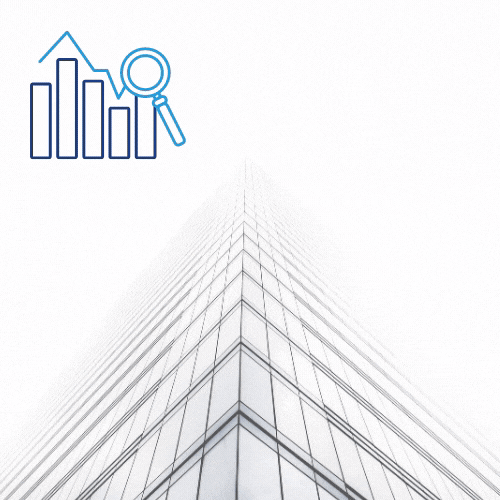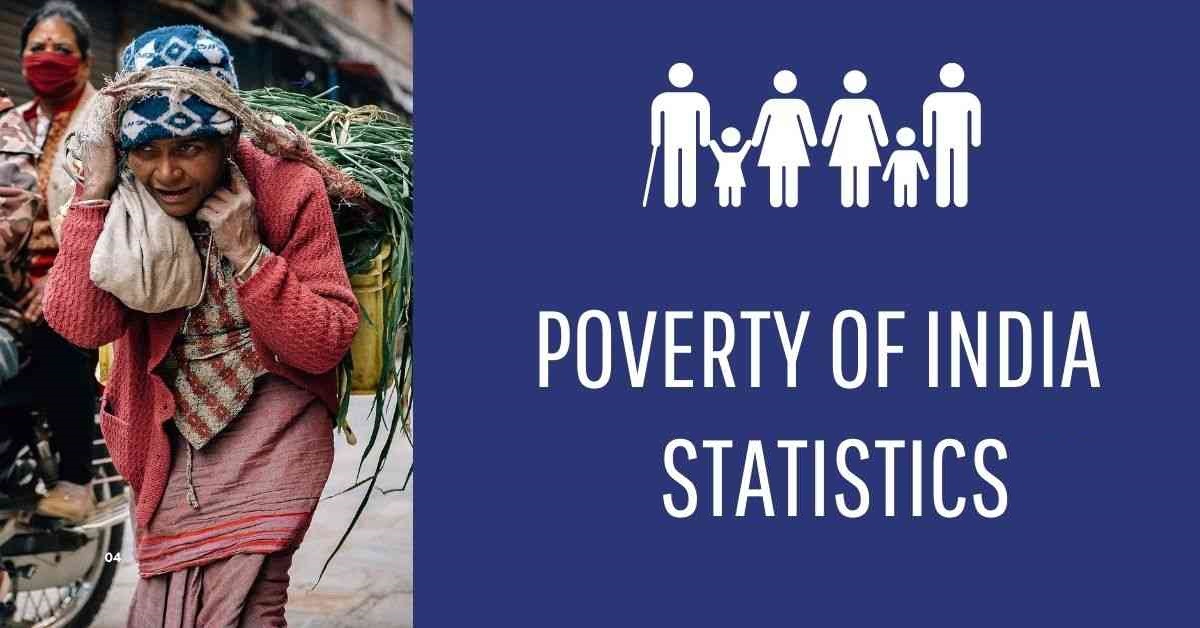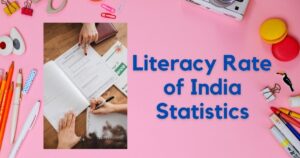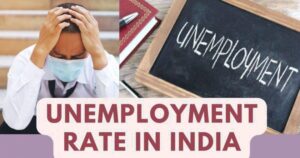Poverty is an issue that affects billions of people around the world, yet most of us are familiar with very few examples of what poverty actually looks like. One nation where poverty has been particularly pervasive in recent years is India, but the country has made great strides in reducing its overall poverty level in recent years and continues to be a developing country to watch closely in the coming years. For more information on the types of poverty found in India, what they look like, and how they’re affecting the nation as a whole, read on to learn all about poverty in India.
Poverty in India 2024
According to the recently released NITI Aayog report on the Multidimensional Poverty Index 2023, around 135 million Indians (One-tenth of the population) managed to escape poverty between 2016 and 2021, with significant progress observed in ‘standard of living’ indicators contributing to this positive change.
Notably, Bihar and Uttar Pradesh (UP) together accounted for a substantial portion of this progress, with 56.8 million individuals from these two states successfully moving out of multidimensional poverty. The report also indicates that the number of Indian states with less than 10% multidimensional poverty has doubled in a span of 5 years.
According to a United Nations report, India has witnessed a remarkable achievement of 415 million people coming out of poverty over a span of 15 years. This significant progress represents a positive transformation in the economic and social conditions of a large section of the population. In 2005/2006, approximately 645 million people were experiencing multidimensional poverty. This number decreased to about 370 million in 2015/2016 and further declined to about 230 million in 2019/2021. These figures illustrate a substantial positive change, reflecting the success of poverty alleviation efforts in the country during this period.
As per the latest poverty report from the government think tank NITI Ayog, the count of states with a population of less than 10 percent living in multidimensional poverty has doubled during the period between 2016 and 2021. Over a span of 5 years, India’s poverty has decreased by 10%.
India has made remarkable progress in reducing multidimensional poverty, witnessing a significant decline of 9.89 percentage points. The number of multidimensionally poor individuals in the country decreased from 24.85% in 2015-16 to 14.96% in 2019-21.
In 2015-16, approximately one in four Indians (24.85 percent) met the criteria for multidimensional poverty. However, by 2019-21, this percentage significantly decreased to 14.96 percent, which translates to approximately one in seven individuals living in multidimensional poverty. This represents a substantial improvement in poverty reduction over the specified period.
Indeed, there has been significant progress in poverty reduction in Bihar and other states between 2015-16 and 2019-21. In 2015-16, more than 51.89 percent of Bihar’s population lived in multidimensional poverty. However, by 2019-21, this figure had decreased to 33.76 percent. This means that while one out of every two persons in Bihar was living in multidimensional poverty in 2015-16, the number has now improved to one in three individuals.
Similarly, Jharkhand managed to reduce the percentage of people living under multidimensional poverty from 42 per cent in 2015-16 to 28.82 per cent in 2019-21. Uttar Pradesh saw a decline from 37.68 per cent to 22.93 per cent, and in Madhya Pradesh, multidimensional poverty dropped from 36.57 per cent to 20.63 per cent. These improvements signify substantial progress in poverty alleviation efforts in these states during the specified period.
India is one of the world’s fastest growing major economy. According to International Monetary Fund (IMF), at the growth rate of 11.5%, India is going to be the fastest growing economy in 2023. The world’s only country to register a double-digit growth in 2023.
But the sudden outbreak of the novel coronavirus in early 2020 pushed many into poverty in India. It is estimated that 150-199 million additional people will fall into poverty at the end of 2023. Due to the pandemic, there were job cuts on a large-scale. The poverty rate of India is set to rise. According to the CMIE report, around 7 million jobs were lost in a year. The consumption expenditure has come down and the public spending on development was sluggish. So, poverty in India is expected to rise in the coming days. The world’s largest economy also has one of its largest rates of child poverty.
India has more than halved its number of severely poor individuals, according to a World Bank working paper issued in the month of April 2023. Between 2011 and 2019, people earned less than $1.9 per day on a purchasing power parity basis. The report says “Within a decade, India may lift the final 10% of its population out of extreme poverty”.
According to an IMF research, India had nearly eradicated extreme poverty by 2020-21 when food subsidies are considered in.
What is Poverty?
Poverty in India can seem like an intractable problem—but it doesn’t have to be! The government has taken many steps to make life better for the citizens of India, but despite these efforts, poverty still remains a serious problem. Let’s discusses what is meant by poverty.
‘Poverty‘ is a situation in which a person couldn’t fulfil his basic needs like food, home, clothes, drinking water. Hence, he is considered to be living in poverty.
According to Niti Aayog, 25% of the Population in India are Poor. Every fourth person of the total population of India is in poverty.
In the Global MPI 2021 ranking, India is at 66 out of 109 other countries.
What is Poverty Rate?
Poverty rate means economic and social conditions characterized by severe deprivation of basic human needs, including food, safe drinking water, sanitation facilities, health care and education.
READ ‘POVERTY IN INDIA’ BOOK
Niti Aayog’s Multidimensional Poverty Index (MPI) Report 2024
According to Niti Aayog’s Multidimensional Poverty Index (MPI) report released in July 2023, a remarkable 13.5 crore Indians have moved out of multidimensional poverty within a span of five years. The report indicates that poverty in rural areas experienced the most rapid decline, dropping from 32.59% to 19.28% within the specified time frame.
The states of Uttar Pradesh, Bihar, Madhya Pradesh, Odisha, and Rajasthan showed the most rapid reduction in poverty during this period.
The National MPI (Multidimensional Poverty Index) measures multiple deprivations in health, education, and standard of living using 12 sustainable development goal (SDG) aligned indicators, each given equal weight.
The latest report highlights that rural areas experienced the most rapid decline in poverty, dropping from 32.59% to 19.28%, while urban areas also saw a reduction from 8.65% to 5.27%.
A UNDP study reveals that a staggering 415 million Indians emerged from multidimensional poverty in a span of 15 years. The study provides multidimensional poverty estimates for all 36 States and Union Territories, as well as 707 administrative districts. Uttar Pradesh, Bihar, Madhya Pradesh, Odisha, and Rajasthan showcased the most substantial reduction in the proportion of multidimensional poor.
Over a period of five years, the MPI value decreased by half, from 0.117 to 0.066, and the intensity of poverty declined from 47% to 44%. This progress signifies that India is on track to achieve SDG target 1.2 (reducing multidimensional poverty by at least half) well ahead of the set timeline of 2030.
Niti Aayog attributes the significant advancements in sanitation, nutrition, cooking fuel access, financial inclusion, drinking water, and electricity to the government’s dedicated focus on improving these areas.
The report reveals that all 12 parameters of the MPI have shown marked improvements. Notably, progress in nutrition, years of schooling, sanitation, and cooking fuel accessibility played a significant role in reducing poverty.
The report emphasized that Uttar Pradesh witnessed the most significant number of individuals moving out of poverty, with 343 million people making the transition. Bihar and Madhya Pradesh were the subsequent states with notable progress in poverty reduction.
As per the report, during the period of 2015-16 (NFHS-4), only seven states in India had less than 10 per cent of their population living in multidimensional poverty. These states were Mizoram, Himachal Pradesh, Punjab, Sikkim, Tamil Nadu, Goa, and Kerala. However, in the subsequent period of 2019-21 (NFHS-5), the number of states with less than 10 per cent multidimensional poverty increased twofold to 14 states. The newly added states in this list were Telangana, Andhra Pradesh, Haryana, Karnataka, Maharashtra, Manipur, and Uttarakhand.
All of these states witnessed significant reductions in their poverty headcount ratios. For instance, in Telangana, the percentage of people living under multidimensional poverty decreased from 13.18 per cent to 5.88 per cent. Similarly, in Andhra Pradesh, it decreased from 11.77 per cent to 6.06 per cent, in Haryana from 11.88 per cent to 7.07 per cent, in Karnataka from 12.77 per cent to 7.8 percent, in Maharashtra from 14.8 per cent to 7.81 per cent, in Manipur from 16.96 to 8.1 per cent, and in Uttarakhand from 17.67 per cent to 9.67 per cent. These figures demonstrate the positive strides made by these states in poverty reduction.
Indeed, it is notable that, except for Bihar, no other state in India has more than one-third of its population living in multidimensional poverty. This indicates that while there is progress in poverty reduction across various states, Bihar continues to face significant challenges in this regard, with over one-third of its population still experiencing multidimensional poverty. Efforts to address poverty in Bihar would be crucial to further improve the overall poverty situation in the country.
India’s national MPI measure is based on utilizing 12 key indicators like nutrition, child and adolescent mortality, antenatal care, years of schooling, school attendance etc. which cover areas such as health and nutrition, education and standard of living.
No matter how fast India’s economy grows, poverty remains one of the country’s biggest challenges. It is often difficult to pinpoint the number of people who live in poverty in India because many live in remote areas and are not counted as part of the national census.
In order to understand what it means to be poor in India, we need to start by defining what poverty actually is. The United Nations classifies a person as poor if he or she has an income of less than $1 per day and struggles with meeting basic needs such as clothing, food, healthcare and shelter—especially considering these conditions are likely to remain unchanged for years or even generations. As such, an important part of fighting extreme poverty is putting these very basic needs within reach.
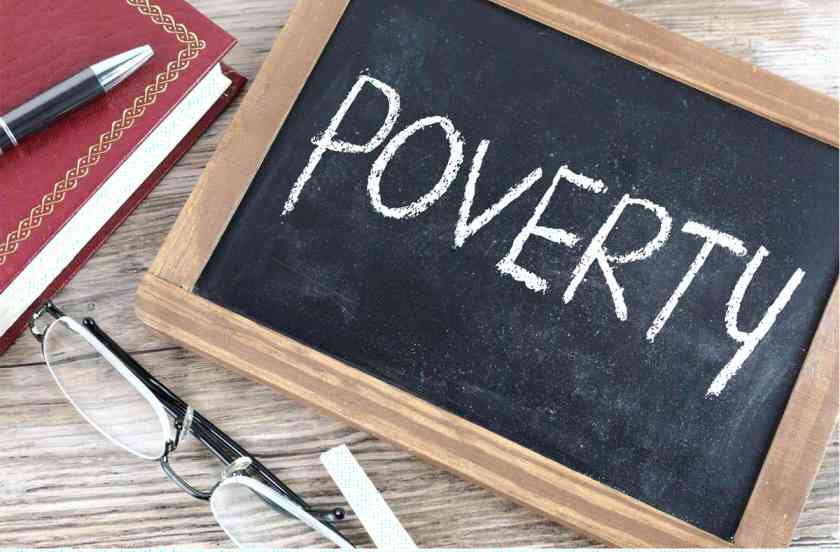
Poverty in India
India is no longer the country with the most extreme poverty, states the Brookings report. In the global poverty ranking, India is sliding down. As per the real-time data from World Poverty Clock, 7% of the Indian population are living in extreme poverty and 0.6 Indians are escaping extreme poverty every minute.
Indian government’s spending on rural welfare schemes was helping in a big way to reduce national poverty. By 2030, the target of government is to eradicate extreme poverty for all people everywhere, currently measured as people living on less than $1.25 a day.
Meaning of Extreme Poverty
Extreme Poverty means individuals who are without income, home, health, or food twice a day. Also, people who are bedridden, no facility to make and eat food, having debts due to health ailments comes under the list of extreme poor category.
India Poverty Statistics 2024
| Total Population | 1,406,156,288 |
| People living in extreme poverty | 83,068,597 |
| Males | 37,767,473 |
| Females | 45,301,124 |
According to World Poverty Clock, the number of people who are living in poverty is 83,068,597 (83 million) or roughly 6% of the population. There are 37,767,473 males and 45,301,124 females impacted by poverty in India. Females are more affected than males.
Poverty in India – Age Groups
| Age Groups | No. of People |
|---|---|
| 0-4 | 11,216,926 |
| 5-9 | 12,103,639 |
| 10-14 | 13,480,409 |
| 15-19 | 10,182,310 |
| 20-24 | 5,211,873 |
| 25-29 | 3,800,309 |
| 30-34 | 6,986,947 |
| 35-39 | 8,220,823 |
| 40-44 | 5,045,245 |
| 45-49 | 1,785,554 |
| 50-54 | 822,463 |
| 55-59 | 1,049,636 |
| 60-64 | 5,527,405 |
| 65-69 | 4,234,187 |
| 70-74 | 3,799,953 |
| 75+ | 4,230,068 |
The age group from 0-19 are the most affected by extreme poverty. This can lead the youngsters to malnutrition and illiteracy. We can see a decreasing trend after the age of 40.
Prosperous State of India
Below are the Indian states with Low Poverty.
- Kerala
- Goa
- Sikkim
- Tamil Nadu
- Punjab
Kerala has the lowest rate of poverty in India, with only 0.71% of the population classified poor. Kerala is followed by states like Goa (3.76%), Sikkim (3.82%), Tamil Nadu (4.89%) and Punjab (5.59%).
Poorest State in India
Below are the Poorest Indian states with High Poverty.
- Bihar
- Jharkhand
- Uttar Pradesh
- Madhya Pradesh
- Meghalaya
Bihar is the Poorest State in India. As per NITI Aayog Multidimensional Poverty Index report, the states like Bihar, Jharkhand, Uttar Pradesh, Madhya Pradesh and Meghalaya have turn out to be the ‘poorest states’ in India. 51.91% of the population in Bihar classified as poor, followed by Jharkhand (42.16%), Uttar Pradesh (37.79%), Madhya Pradesh (36.65%) and both Meghalaya & Assam (32.67%)
Poverty in India State wise
| Area | Multidimensional Poverty Index Score |
|---|---|
| Andaman & Nicobar Islands | 4.30 |
| Andhra Pradesh | 12.31 |
| Arunachal Pradesh | 24.27 |
| Assam | 32.67 |
| Bihar | 51.91 |
| Chandigarh | 21.81 |
| Chhattisgarh | 29.91 |
| Dadra and Nagar Haveli | 27.36 |
| Daman and Diu | 6.82 |
| Delhi | 4.79 |
| Goa | 3.76 |
| Gujarat | 18.60 |
| Haryana | 12.28 |
| Himachal Pradesh | 7.62 |
| Jammu & Kashmir and Ladakh | 12.58 |
| Jharkhand | 42.16 |
| Karnataka | 13.16 |
| Kerala | 0.79 |
| Lakshadweep | 1.82 |
| Madhya Pradesh | 36.65 |
| Maharashtra | 14.85 |
| Manipur | 17.89 |
| Meghalaya | 32.67 |
| Mizoram | 9.80 |
| Nagaland | 25.23 |
| Odisha | 29.35 |
| Puducherry | 1.72 |
| Punjab | 5.59 |
| Rajasthan | 29.46 |
| Sikkim | 3.82 |
| Tamil Nadu | 4.89 |
| Telangana | 13.74 |
| Tripura | 16.65 |
| Uttar Pradesh | 37.79 |
| Uttarakhand | 17.72 |
| West Bengal | 21.43 |
Measuring Poverty in India
Global Multidimensional Poverty Index – India
The Global Multidimensional Poverty Index was launched in 2010 by the United Nations Development Program (UNDP) and the Oxford Poverty and Human Development Initiative (OPHI). Each year, it measures the complexities of poor people’s lives, individually and collectively and focuses how the multidimensional poverty has declined. India is among the four countries to have halved their MPI value. During the period from 2006 to 2016, India had the biggest reduction in the number of multidimensionally poor people. 273 million of them moved out of this poverty in over 10 years time.
The MPI is a measure of multidimensional poverty covering more than 100 developing countries. It tracks deprivation across three dimensions and 10 indicators as indicted below:
- Education, where years of schooling and child enrolment comes into effect (1/6 weightage each, total 2/6);
- Health, the child mortality and nutrition comes into this (1/6 weightage each, total 2/6);
- Standard of living, includes electricity, flooring, drinking water, sanitation, cooking fuel and assets
Global MPI 2020 Report indicates that India is 62nd among 107 countries with an MPI score of 0.123 and 27.9% population identified as multi-dimensionally poor, the number was 36.8% for rural and 9.2% for urban India. There were wide variations across states.
What is Poverty Line?
‘Poverty Line‘ is a method to find the poverty of a person based on his income and consumption level.
According to UNDP estimates, the number of people living below the poverty line of $2.15 per day had declined to 10% in India by the year 2021.
The updated poverty line of $2.15 per day reveals that, approximately 10 percent of people in the country were considered poor. This is a significant decline from 22.5 percent in 2011, indicating progress in poverty reduction efforts.
In terms of the distribution between rural and urban areas, rural India had a higher proportion of poor people, with 11.9 percent living in poverty, compared to urban areas where 6.4 percent of the population was considered poor. This disparity highlights the continued challenges in addressing poverty in rural regions compared to urban centers.
Poverty Line in India
The poverty line of India in Rural areas is Rs. 972 and Urban area, it is Rs. 1407
Those who earn above this level is considered as ‘Not poor’ and come under ‘Above the Poverty Line’ and those who earn below this level is considered as ‘Poor’ and they are ‘Below the Poverty Line‘.
Every 5 years, sample surveys are conducted by NSSO (National Sample Survey Organization) to estimate the poverty line of India.
Official Release of Poverty Line Estimates
The Planning Commission used to release the estimates of poverty as number of persons below poverty line as a percentage of Indian population. This was followed for the years 1973-74, 1977-78, 1983, 1987-88, 1993-94, 1999-2000, 2004- 05, 2009-10 and 2011-12.
For 2011-12, the Planning Commission released poverty data in July 2013, based on the Tendulkar poverty line.
Poverty Percentage in India
- According to Global MPI Reports 2019 and 2020, 21.9% of the population was poor in the country or the number of poor was pegged at 269.8 million
- According to World Poverty Clock in 2023, roughly 6% or 83,068,597 (83 million) of the population are living in poverty.
World Bank Poverty Line
The World Bank Poverty Line defines extreme poverty as living on less than $1.90 a day, measured in 2011 purchasing power parity prices.
As an alternative way of measuring the poverty of people, World Bank developed the ‘poverty gap index’ that measures the intensity of poverty, by calculating the amount of money required by a household in order to reach the poverty line. That means, it calculates the income or consumption shortfall from the poverty line.
International Poverty Line
According to the World Bank collection of development indicators, the Poverty gap for India is reported at 4.3% in 2011 down from 20% in 1977.
World Poverty Clock (WPC)
World Poverty Clock is a systematic analytical framework to measure progress towards SDGs by World Data Lab. It is a global model that tracks real-time poverty estimates until 2030 for every country in the world. Here publicly available data on income distribution, production and consumption are used, and they bridge the common decade gaps between large-scale surveys and censuses.
The percentage of the world’s population living below the extreme poverty line has reduced from 36% to 10% in 2015 for the last quarter-century according to World Poverty Clock. That means a reduction from about 1.9 billion people living in extreme poverty to about 736 million in 2015.
Causes of Poverty in India
There are many Causes for Poverty in India
- Famines
- Malnutrition
- Illiteracy
- Unemployment due to the rapid growth of population
- Low level of economic development
- Unequal distribution of resources and land
- Improper implementation of various welfare policies
- Farmers unable to repay the loan they borrowed
In a country as wealthy as India, why does one fourth of its population live below the national poverty line? The causes are complex, including exploitation by local landlords and colonial-era policies that still affect current living conditions. There are also cultural factors like caste-based discrimination that make it difficult for lower-class Indians to escape their economic situation. But what does it mean to be poor in India today, and how is it different from being poor 20 years ago? Here we examine some key features of Indian poverty—the role played by caste and religion, government response to poverty, gender issues and a growing problem with urbanization—and lays out potential solutions going forward.
Poverty Alleviation Programs in India
Poverty in India is an ever-present problem that has endured throughout the country’s history, and unfortunately it seems that it will continue to be a problem as long as income inequality continues to exist and the percentage of the population living below the poverty line remains so high. Although there are some schemes that have been put in place to help alleviate poverty, there will always be those who struggle due to lack of access to resources and opportunities. People may also stay trapped in poverty because it has become too risky to move up to better jobs; they often do not have money to buy equipment and supplies, pay school fees for their children or start small businesses like shops that would allow them to produce things with more value so that they can earn higher incomes. With a huge population and limited resources, poverty alleviation in India has been a slow, yet persistent process. Successive governments have tried to stem rural-urban migration through pro-rural policies aimed at improving living conditions and employment opportunities, but millions still live below their means
After the independence, the Indian government initiated many welfare schemes like subsidizing food through ration cards, increased access to loans, promoting education, improving agricultural methods and family planning. These measures helped greatly to eradicate poverty by eliminating famines, malnutrition, illiteracy and unemployment.
A record decline in poverty by more than half is only since 1991 after India’s rapid economic growth.
Promotion of economical growth.
Increasing the anti-poverty programmes like MGNREGA, which was started in the year 2005, aims to provide a minimum of 100 days of wage employment to every household. Ministry of Rural Development’s programmes like NRLM, PMAY, DDUGKY focused on alleviating the poverty of Indian households.
India’s dominant economic growth over the last 30 years continued to pull millions of people out of poverty. Obviously, due to the unexpected impact of COVID-19, India will also be experiencing a likely spike in its poverty rate. Moving forward, the elimination of poverty in India over the next decade is within reach in spite of challenges ahead.
(Source: Global Multidimensional Poverty Index (MPI)- UNDP,
International Monetary Fund,
World Poverty Clock,
Niti Aayog’s SDG India Index)
READ: Literacy Rate in India Statistics
Disclaimer: The data research report we present here is based on information found from various sources on the internet. We are not liable for any financial loss, errors, or damages of any kind that may result from the use of the information herein. We acknowledge that though we try to report accurately, we cannot verify the absolute facts of everything that has been represented.
